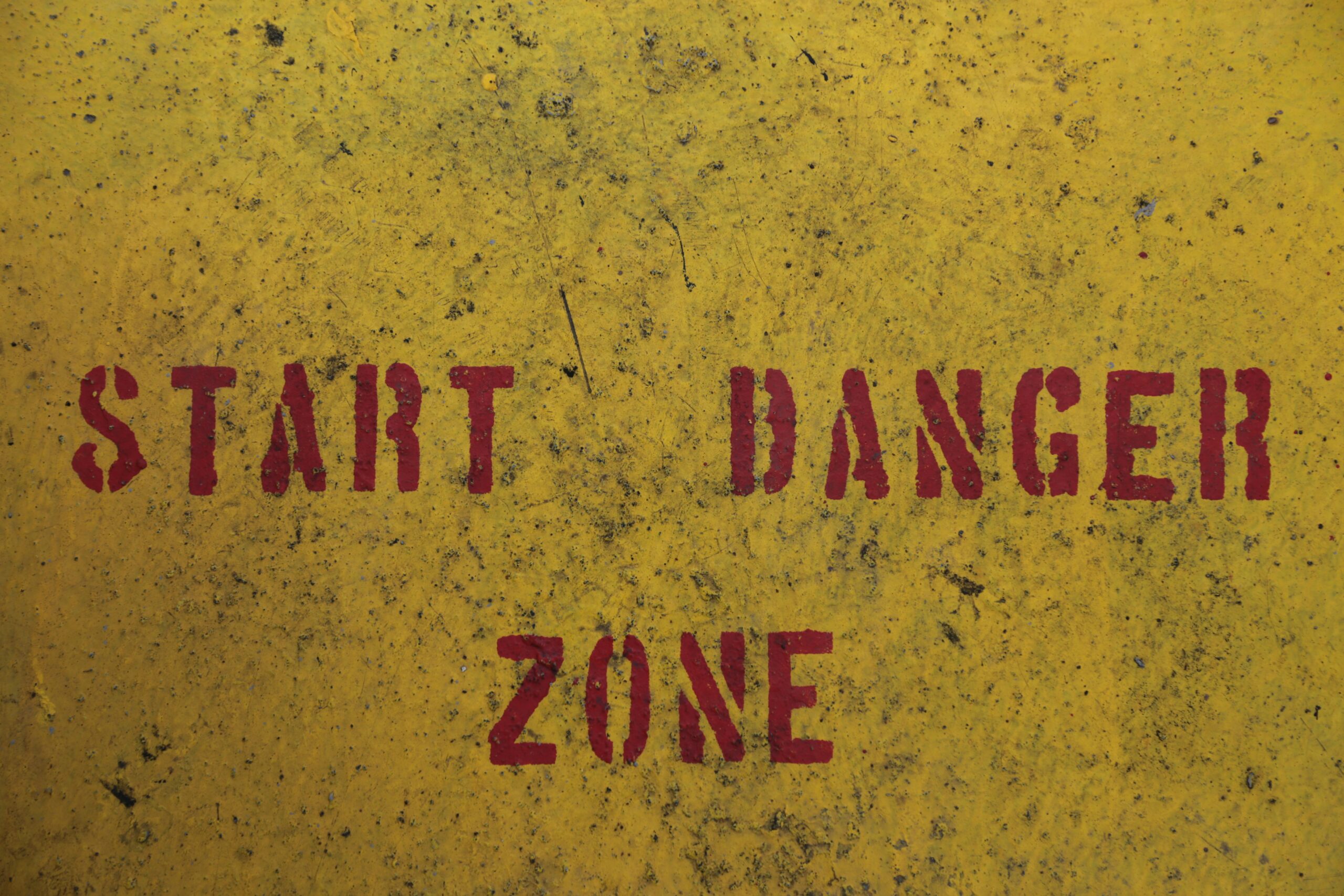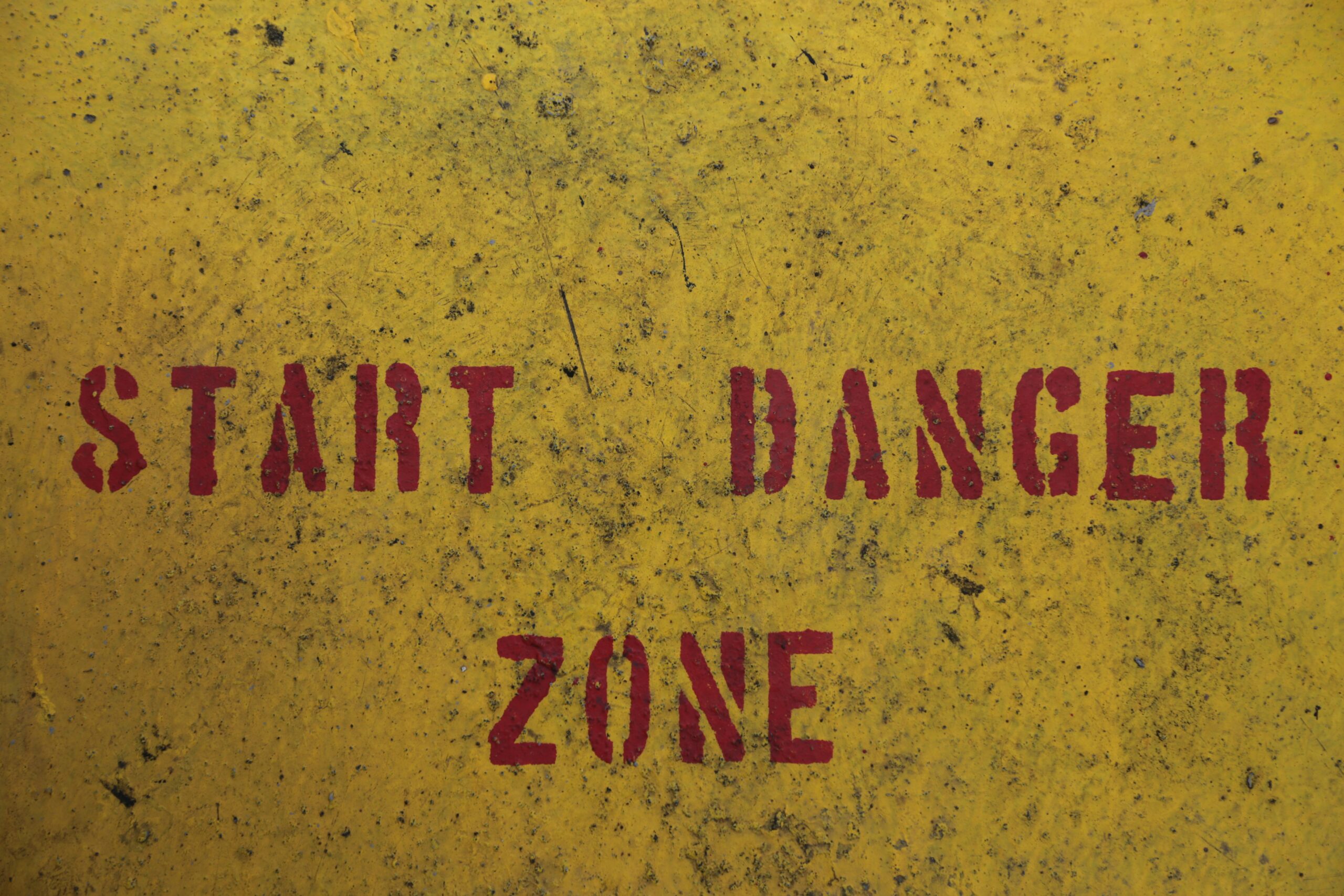
High-Stakes Decisions: Navigating Risk and Reward in Business and Beyond
Understanding High-Stakes Decisions
High-stakes decisions are critical choices that carry significant consequences, especially in the realms of business and entrepreneurship. These decisions often involve substantial financial investments, potential changes in market dynamics, or shifts in organizational direction. For instance, a company contemplating a merger or acquisition must weigh the benefits against the risks, as such an action can profoundly impact its stakeholders, revenue streams, and overall market competitiveness.
The context surrounding high-stakes decisions is filled with uncertainty. Factors such as market volatility, economic trends, and competitive actions can heighten the stakes even further. Entrepreneurs and business leaders must navigate these complexities while considering the potential for both risk and reward. The reward could manifest as increased market share, enhanced brand recognition, or improved profitability. Conversely, the risk involves the possibility of financial loss, reputational damage, or operational disruptions.
Several elements influence the decision-making process in these high-pressure environments. Firstly, the ability to gather and analyze relevant data is crucial. Decision-makers must evaluate quantitative metrics, like financial projections, alongside qualitative insights drawn from market research. Additionally, understanding the psychological aspects of risk, such as risk tolerance and individual biases, is paramount. These psychological factors can directly affect how decisions are approached and ultimately made.
Furthermore, collaboration and input from diverse team members can enrich the decision-making process. By leveraging various perspectives, organizations can better assess the implications of potential decisions. Recognizing the multi-faceted nature of high-stakes situations enables leaders to make informed choices, maximizing the likelihood of favorable outcomes while effectively managing associated risks.
The Nature of Risk in Business
Risk is an inherent aspect of any business endeavor, enveloping a wide array of uncertainties that can impact outcomes significantly. In the context of business, risk can be classified into several types, each presenting unique challenges and opportunities for leaders. Financial risk, operational risk, and reputational risk are among the most prevalent types that executives must confront regularly.
Financial risk involves the potential for monetary loss due to market fluctuations, poor investment decisions, or inadequate financial management. Businesses may face this risk through variable interest rates, currency exchange rate changes, and shifts in market demand that can adversely impact profitability. Leaders must engage in careful financial planning and forecasting to mitigate potential losses and make informed investment choices.
Operational risk pertains to the internal processes and systems within a business, encompassing failures like breakdowns in supply chains, employee errors, or technical malfunctions. Managing operational risk requires organizations to implement robust procedures, staff training, and contingency planning, ensuring that operations can withstand adverse events and maintain continuity.
On the other hand, reputational risk relates to the perception of the business by stakeholders, including customers, employees, and the public. A single negative event, such as a data breach or ethical lapse, can tarnish a company’s image and lead to a loss of trust and revenue. Consequently, it is crucial for businesses to engage in proactive reputation management and maintain transparent communication with stakeholders to mitigate this risk.
Ultimately, risk assessment plays a pivotal role in the decision-making process within businesses. It helps leaders identify, analyze, and prioritize risks, enabling them to devise strategies that align with their business objectives. By integrating effective risk management practices into their strategic plans, entrepreneurs and investors can navigate the unpredictable landscape of business while maximizing their potential for success.
Calculating Risks Like a Fighter
Both fighters and entrepreneurs engage in a meticulous process of assessing risks and potential rewards, albeit in different arenas. Fighters, before stepping into the ring, evaluate their opponents based on various factors including strength, skills, past performance, and even psychological tactics. Similarly, entrepreneurs assess market conditions, competitor strategies, and consumer behavior when making business decisions. This parallel underscores the importance of a strategic approach in both fields, as each decision can significantly impact outcomes.
An illustrative case is that of mixed martial arts (MMA) champion Amanda Nunes. Nunes’s career showcases how risk assessment is crucial for success. Before every match, she carefully analyzes her opponent’s fighting style, strengths, and weaknesses. Nunes incorporates this analysis into her training regime to devise a tailored strategy aimed at maximizing her chances of victory. By understanding the risks associated with facing a specific opponent, she positions herself to exploit vulnerabilities while mitigating potential threats.
Entrepreneurs exhibit a similar mindset. For example, Elon Musk’s approach to launching SpaceX exemplifies how risk evaluation shapes business strategy. Musk faced significant risks in the aerospace industry, which included substantial financial investment and the possibility of failure. However, by conducting thorough market research and evaluating technological capabilities, he formulated a strategy that addressed these risks. Musk also encourages innovation and calculated risk-taking within his companies, emphasizing that breakthrough success often lies just beyond the comfort zone.
This alignment between fighters and entrepreneurs illustrates a fundamental truth: calculated risks are necessary for achievement. By applying critical analysis and strategic planning, both can navigate their respective paths more effectively. Ultimately, the essential skills of risk assessment and reward calculation bridge the worlds of combat sports and business, revealing invaluable insights into achieving success.
The Importance of Overcoming Criticism
In the realm of business and various other endeavors, facing criticism is an inevitable reality. Public scrutiny can often destabilize confidence and hinder the decision-making process, especially when the stakes are high. However, the ability to navigate through negative feedback is crucial for successful outcomes. Entrepreneurs and leaders must cultivate resilience, staying true to their vision even when confronted with skepticism or opposition.
Consider the example of Steve Jobs, the co-founder of Apple Inc. Early in his career, Jobs faced significant criticism for his unconventional approach to product design and business management. Skeptics questioned his decisions, arguing that he was overly ambitious and unrealistic about the potential of technology. Yet, despite the backlash, Jobs persisted in his vision of integrating technology with artistry, leading to revolutionary products like the iPhone and iPad. His story exemplifies how overcoming criticism can lead to unprecedented success and innovation.
Similarly, within the realm of sports, the journey of mixed martial artist Conor McGregor illustrates the impact of public scrutiny on decision-making. Early in his career, McGregor attracted a wave of criticism and doubt regarding his abilities and aspirations in the UFC. Rather than succumbing to detractors, McGregor used the criticism as fuel for his ambition, ultimately becoming a champion and a global icon. His commitment to his vision, despite external negativity, showcases the importance of resilience in high-stakes environments.
These examples highlight the necessity of maintaining focus and determination in the face of criticism. Resilience fosters innovative thinking, empowering individuals to make bold decisions that can redefine industries or sports. Therefore, it is essential for those involved in high-stakes decisions to embrace criticism as a component of the journey towards success, harnessing it for personal growth and strategic advantage.
Investing in Preparation: A Key to Success
In the ever-evolving landscape of business, making high-stakes decisions requires a solid foundation of preparation. Investing time and resources in thorough preparation significantly mitigates risk and enhances the likelihood of favorable outcomes. By focusing on strategic methodologies such as market research, financial planning, and training, organizations can ensure they are adequately equipped to navigate the complexities associated with crucial decisions.
Market research is an indispensable tool for preparing for business endeavors. It involves systematically gathering, analyzing, and interpreting data about target markets or customers. Understanding consumer behavior, market trends, and competitive analysis provides essential insights that can guide decision-making processes. This proactive approach allows businesses to anticipate challenges and opportunities within the marketplace, fostering a risk-aware environment that prioritizes informed choices.
Financial planning is another critical aspect of preparation. Establishing a robust financial strategy helps organizations assess potential risks while allocating resources efficiently. By creating comprehensive budgets, conducting cash flow analyses, and setting clear financial goals, companies can navigate uncertainties with greater confidence. Proactive financial management enables businesses to identify and mitigate potential setbacks, leading to more resilient operations.
Moreover, training and development contribute significantly to effective preparation. Equipping teams with the necessary skills and knowledge ensures they can respond promptly and appropriately in high-pressure situations. Investing in training programs not only enhances individual performance but also cultivates a culture of excellence. By fostering a workforce that is well-prepared and adept at handling challenges, businesses can improve their overall resilience and adaptability.
In summary, investing in thorough preparation encompasses market research, financial planning, and training, all of which are integral to minimizing risk. A commitment to excellence through meticulous preparation empowers organizations to confidently make strategic decisions, ultimately elevating their prospects for success in high-stakes environments.
Making Bold but Calculated Decisions
In today’s competitive business landscape, making bold yet calculated decisions is essential for entrepreneurs seeking to achieve substantial growth and innovation. This delicate balance between daring and prudence can often mean the difference between exceptional success and considerable failure. Various frameworks and methodologies can assist decision-makers in evaluating risks while still taking the necessary leaps into new opportunities.
One of the most widely recognized approaches is the SWOT analysis, which allows leaders to identify Strengths, Weaknesses, Opportunities, and Threats associated with potential decisions. By thoroughly assessing these elements, entrepreneurs can pinpoint avenues for growth while also anticipating the challenges that may arise. Additionally, utilizing scenarios where one envisions different potential outcomes can provide valuable insights into the risks involved with each choice. This practice fosters a more informed decision-making process, allowing leaders to navigate through uncertainty with confidence.
Another valuable methodology is the concept of ‘minimum viable products’ (MVPs). This principle encourages entrepreneurs to release a simplified version of a product or service to gather data and feedback before fully committing resources. The MVP approach not only mitigates risk but also maximizes rewards by aligning product development with market demands, thus ensuring that relevant adjustments can be made early on.
Furthermore, organizations may consider leveraging decision-making frameworks such as the Decision-Making Matrix. This tool aids in evaluating multiple options against pre-defined criteria, promoting objective analysis of potential risks versus rewards. By integrating qualitative and quantitative data into their decision-making processes, leaders can ensure a well-rounded evaluation that strengthens their strategic outcomes.
Ultimately, embracing calculated risks is a cornerstone of entrepreneurship. By employing these methodologies, leaders can foster an environment where bold decisions are not only made but are consistently aligned with their long-term strategic objectives. In this way, they pave the way for innovation and resilient growth in their respective markets.
Real-Life Examples of Risk and Reward
High-stakes decisions often shape the trajectory of businesses and industries. Several notable case studies highlight how companies navigated risk and reward, yielding lessons that extend beyond mere profit and loss. One prominent example is the launch of the original iPhone by Apple in 2007. At the time, the smartphone market was burgeoning, yet heavily saturated. Apple’s decision to enter this space came with significant risks, considering the established competitors like Nokia and BlackBerry. However, the decision to integrate a touchscreen interface and app store transformed the industry, leading to substantial market share and enormous profits for Apple. This illustrates how calculated risk-taking can yield extraordinary rewards.
Conversely, the infamous case of Blockbuster serves as a cautionary tale regarding the consequences of failing to adapt to changing market conditions. In the late 1990s and early 2000s, Blockbuster was the dominant rental chain in the United States. When Netflix emerged with its subscription model and digital streaming option, Blockbuster opted to stick with its existing business model, failing to recognize the shift in consumer preferences. This decision ultimately led to the company’s bankruptcy in 2010, reinforcing the notion that inaction can be as risky as taking bold actions.
Another significant case is that of Coca-Cola’s launch of New Coke in 1985. The brand’s decision to reformulate its flagship product was met with public backlash, resulting in minimal sales and a swift return to the original formula. This incident underscores the importance of understanding consumer sentiment and the potential pitfalls of underestimating brand loyalty. Affordable risk assessment strategies that prioritize customer feedback can mitigate such failures.
These examples illustrate the complexities of decision-making in high-stakes environments. The outcomes highlight that informed risk can lead to substantial rewards, while miscalculations or complacency can spell disaster. By understanding the lessons from these cases, organizations can make more enlightened choices in the face of uncertainty.
Lessons Learned: Mitigating Risks for Future Success
In the landscape of high-stakes decisions, the ability to effectively mitigate risks can greatly influence the probability of achieving successful outcomes. One of the primary lessons learned from examining high-stakes scenarios is that thorough preparation is essential. This preparation involves not only understanding the various risks involved but also formulating strategies to address them proactively. Business leaders must evaluate potential threats and devise contingency plans that allow for swift adaptations should challenges arise.
Another crucial takeaway is the significance of data-driven decision-making. Employing analytical tools and methodologies provides insights that can unravel complex variables contributing to risk. Businesses that leverage real-time data are often better positioned to discern patterns and make informed choices that align with their strategic objectives. Thus, fostering a culture that prioritizes data collection and analysis can enhance the decision-making process while minimizing uncertainty.
Strategic decision-making cannot be overstated in the context of risk mitigation. It is vital for leaders to adopt a systematic approach that incorporates both qualitative and quantitative assessments. This holistic view of potential risks allows for a balanced consideration of possible rewards and losses. By adhering to clearly defined objectives, companies can make choices that enhance their resilience and adaptability in the face of adversity.
Additionally, collaboration and consultation with stakeholders play a pivotal role in the risk mitigation process. Involving diverse perspectives can enrich the decision-making framework, leading to more robust solutions. Therefore, fostering open communication channels and encouraging input from all levels of an organization can prove beneficial in identifying and managing risks effectively.
Through these lessons learned, businesses are encouraged to refine their approach to high-stakes decisions continually. Emphasizing preparation, data utilization, strategic thinking, and collaborative efforts will significantly enhance the likelihood of future successes while navigating the intricate dynamics of risks and rewards.
Conclusion: Embracing Risk in Business
In the realm of business, high-stakes decisions are an inevitable component of growth and innovation. Every entrepreneur must navigate a landscape riddled with uncertainty, where the potential for both risk and reward looms large. It is essential to understand that taking calculated risks can lead to significant advancements and opportunities that may not be present in a more cautious approach. The willingness to embrace these uncertainties is often what distinguishes successful ventures from those that merely survive.
High-stakes decisions require a nuanced understanding of the potential outcomes, and it is crucial to analyze the associated risks thoroughly. By doing so, business leaders can develop a strategic framework that allows them to make informed choices while minimizing adverse consequences. Risk assessment tools and decision-making frameworks serve as vital instruments in navigating these turbulent waters. They help in identifying not only the potential pitfalls but also the numerous opportunities for growth that may arise from these challenging scenarios.
Moreover, fostering a culture that views challenges as gateways to improvement can encourage team members to contribute innovative ideas without the fear of failure. This positive environment is critical for nurturing creativity and adaptability, making organizations more resilient in the face of high-stakes challenges. Embracing risk should not be regarded with hesitation but rather as a necessary step towards achieving long-term success and sustainability in the business world.
Ultimately, understanding that risk and reward are intricately linked can empower entrepreneurs to undertake bold strategies that can redefine their industries. By viewing high-stakes decisions as opportunities rather than threats, individuals can cultivate a mindset geared towards success and growth.

